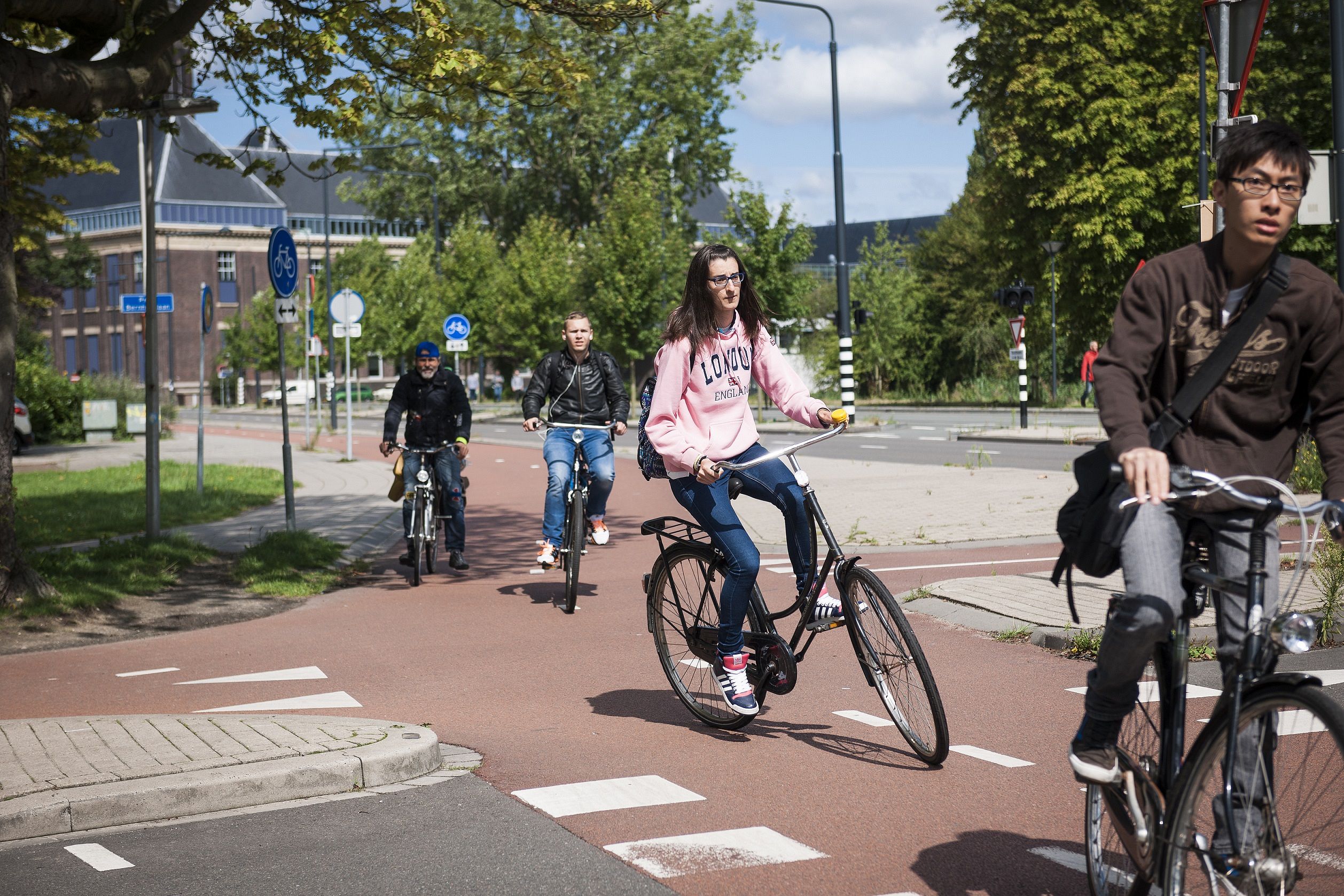Previously we outlined some of the official cycling rules in the Netherlands. This time, we’re talking about the unofficial cycling rules – the kind of tips you won’t find in your guide book.
Helmets
They’re not compulsory, and generally not worn in the Netherlands. American born Bill Rossen, Professor in the Department of Geotechnology, was involved in a bike accident at rush hour without a helmet, and landed on his head. “Fortunately, it wasn’t too serious, but it could have been much worse,” he said. “A friend advised me that a bike helmet does two things. Firstly, it protects your head. Secondly, it broadcasts to everyone around you that you’re a foreigner. Wearing a helmet, you can be sure that all other participants at a busy intersection notice you. I now wear a helmet when I travel to and from campus.”
Rush hour
Avoiding rush hour to and from campus, generally between 8:30 – 9:00 and 17:30 – 18:00, is one of expat Rossen’s top tips. Traffic leaving campus at 19:00 is light, he says, but there is often heavy traffic coming in for student activities. “At these times there is just too much traffic to keep track of it all,” he said. “If possible, avoid the heavily used routes. There are side streets that allow one to avoid the converging traffic just south of the Sebastiaansbrug, for instance.”
Communication
This may sound obvious, but look around you and make eye contact in traffic. This will enable you to better anticipate unexpected situations. Use hand signals before changing course, and make sure your intentions are clear. Look out for electric bikes and cargo bikes in cycle lanes, at the same time as being aware of other modes of transport around you. “Dutch people have a supernatural sense of balance that allows them to get away with outrageous behaviour almost always without incident,” said Rossen. It’s not uncommon to see riding with no hands, whilst texting or phoning, or riding three or four abreast. “Don’t let other riders distract you,” he said. “Use the bell if you think people don’t know you’re coming and you plan to come close by them.”
Hesitation
If you hesitate, you will lose your position of priority on the road, plus it can be dangerous. “Most bikers expect one not to slow down at an intersection, or to wait to see what they will do, but to plough through on the assumption that they will behave as expected. Thus, if one stops or hesitates, the other biker may be heading fast right for where you are,” said Rossen. “I still would rather be cautious than assume that I know how the other person is going to behave, however!”
Bad weather
The Dutch are not afraid of bad weather; they will cycle year round. During winter, the roads will be gritted to help keep them ice free, but it’s not always enough. “Bridges are notorious for slippery surfaces,” said Bert Meijer, Health Safety & Environment adviser at TU Delft. “Cycling in the vicinity of high buildings during storms can also be very dangerous. A good example is the EEMCS building, where there are special road signs warning you of gusts.”
Parking
Bicycle theft is common, so always lock your bike. Most bikes have a built-in slot–lock, but it’s worth investing in a decent bike chain too. You cannot just park your bike wherever you please. In some parts of town, especially near the train station, improperly parked bikes are removed by the municipality.
Cycling anywhere
Cyclists have a habit of cycling almost anywhere. “The municipality of Delft has been quite pragmatic about this. Most pedestrian zones, in the town centre, allow for cycling. Beware: inhabitants of Delft are used to cyclists zigzagging between pedestrians, but most tourists are not! The same applies to streets with one–way traffic where, in most cases, an exception is made for cyclists,” said Meijer.



Comments are closed.